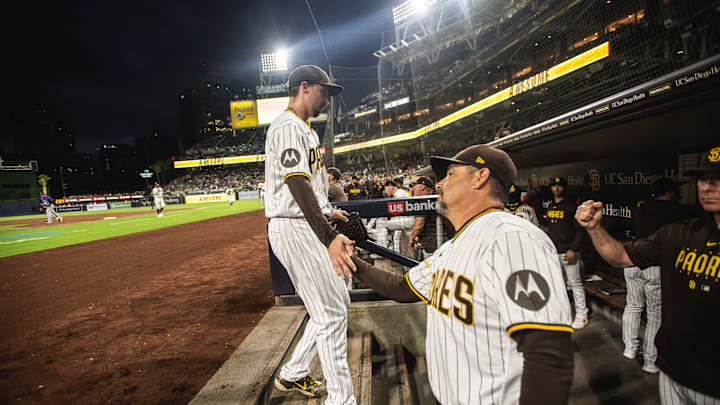The SF Giants have been connected to Blake Snell quite a bit this offseason as they are a logical landing spot for the two-time Cy Young winner. That will continue until he signs one way or the other. What are some reasons that he may not be a fit for San Francisco?
3 reasons why Blake Snell might not be a fit for the SF Giants
None of the remaining free-agent options offer more upside than the left-handed hurler. Snell is coming off of an excellent 2023 campaign in which he posted a 2.25 ERA, 3.44 FIP, 1.18 WHIP, 11.7 K/9, and a 2.36 SO/W ratio in 32 appearances for the San Diego Padres.
It is hard to call 2023 a career year given that he tallied a 1.89 ERA in 31 outings with the Tampa Bay Rays during his first Cy Young season in 2019. Nevertheless, Snell really could not have had a much better season in a contract year.
The veteran pitcher will be entering his age-31 season and while that may be concerning, he continues to rack up high strikeout totals while flashing a mid-90's fastball with an excellent curveball, changeup, and slider.
It is hard to project exactly how velocity will regress as a player ages, but Snell has a sturdy 6-foot-4, 225-pound frame that should allow him to maintain velocity into his 30's. With all that being said, there are still some concerns that the Giants would need to consider.
1. Below-average command
Perhaps, the biggest factor against San Francisco being a potential landing spot is Snell's below-avergae command. The lefty pitcher led baseball with 99 walks in 2023 despite excellent results otherwise.
This has a downstream effect in that Snell's pitch count usually runs high earlier into the game, meaning shorter starts. He averaged just 5.2 innings per start in 2023, which is not uncharacteristic throughout his eight-year career.
Snell has tallied a 4.1 BB/9 rate since he debuted with the Rays back in 2016. That would be the highest rate in baseball by far among active pitchers with at least 1,000 career innings. Snell is just shy of that mark at 992.2 innings.
Rich Hill (3.5 BB/9) and Lucas Giolito (3.4 BB/9) have the highest walk rates among active pitchers with at least 1,000 innings under their belt. Both have had nice careers, but there is some variability in performance year-over-year. Snell's command will have to improve at some point or the back end of his deal might be tough once his fastball velocity and the rest of his pitch mix regresses.
On the other hand, the Giants led baseball with a 2.5 BB/9 rate in 2023. They like pitchers who attack and can command their pitches in all four quadrants of the strike zone. Adding Snell would go against the grain of the team's pitching philosophy.
